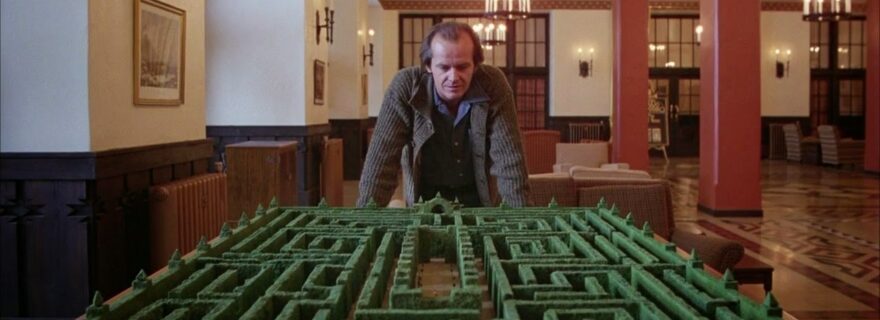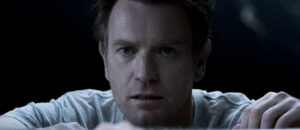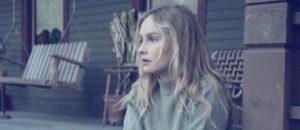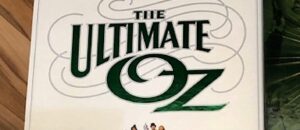For three years running, Warner Bros. has promoted a new restoration as part of the “Cannes Classics” series. These screenings take place in the Debussy, the second largest (and preferred) theater of the palais complex. With 900 seats, it’s a true temple to cinema, with particularly exceptional sound reproduction. The screenings are treated as premieres, with major guests in tuxedos walking the red carpet as films have done here for decades.
Two years ago, WB showcased Clint Eastwood’s Unforgiven, the restoration that would end up on the UHD release that came out shortly after the screening. Last year, the “Nolan version” of Stanley Kubrick’s 2001: A Space Odyssey screened in 70mm. That was frustrating given the exceptional 4k restoration that would have been preferred, but it was still a wonderful celebration of Kubrick.
This year, we got another look at Kubrick’s vision. The filmmaker’s daughter Katharine Kubrick and his longtime assistant Leon Vitali were joined by Alfonso Cuarón to present a stunning new version of The Shining, the 1980 classic starring Jack Nicholson, Shelley Duvall, and Danny Lloyd based on the novel by Stephen King. From the opening shot (Montana’s Saint Mary Lake substituting for Colorado in the ride up to the Overlook Hotel), the picture quality was gobsmacking. I sat front row, as per tradition, and the image was so rich, colorful, and had such wonderful grain representation that I didn’t even notice the famous helicopter shadow.
The color saturation felt extremely film-like. The autumnal colors of the Overlook contrasted perfectly with the cool blues of the exterior snowdrifts and sickly green of the hedge maze. There’s no sense of cranking the contrast or the color timing, just a perfect representation of the original 35mm photography.
Vitali has long come under scrutiny by fans who feel they know better than those part of the actual production, but his inclusion manages to give a stamp of authenticity to how the film should look. Vitali was tasked with checking all the prints that went out worldwide, and he spoke during the presentation about how Kubrick insisted on newly struck materials being sent to all screenings rather than second-run prints, ensuring a consistency wherever people saw the film.
Naturally, this consistency can be maintained far easier now in the digital domain, provided of course that the systems are properly calibrated and the equipment is up to modern standards. Cuarón spoke of this as well, talking about how the digital presentation was the best reflection of Kubrick’s vision possible given the clarity of the image and the fact that quality could be preserved no matter the number of screenings. This served as a contrast to Christopher Nolan’s inaccurate insistence that somehow his preferred print of 2001, based on a re-timed 1992 restoration and printed onto modern release stock, in any way reflected what audiences saw in 1968.
Simply put, The Shining looked and sounded spectacular. The rumbling score echoed through the Debussy in glorious fashion. The film has such density and incessancy that it can be overwhelming on a big screen, but the scope of production design popped off the very large screen in ways it never could at home. Jack Nicholson’s over-the-top descent into madness feels even larger somehow, as if seeing all his quirks magnified makes them even more menacing.
Warner Bros. plans to release the 4k disc later this year, and the DCP of the restoration is already playing at places like Toronto’s TIFF Lightbox. It will be a no-brainer to add the title to your collection, of course, but any cinephiles owe it to themselves to capture this stupendous celebration of Kubrick’s art on the biggest screen possible. The Shining is easily one of the greatest works of cinema, and this presentation of Kubrick’s vision is not to be overlooked.






njscorpio
Could this find it’s way into a Criterion release, or would licensing not allow for that?
Josh Zyber
Seems very doubtful. This is the type of iconic movie that Warner Bros. is going to want to hold onto for itself.
Judas Cradle
Why would you have preferred a lower resolution digital 4K DCP of 2001?
4 perf 35mm resolution is 6K (the effects were obtained in 65mm, so there was no resolution loss due to SFX compositing).
Judas Cradle
Actually 2001 was shot 70mm so it would be 12-13K in 70mm showings.
18k = IMAX 15-perf (or 36K?)
12-13k = 70MM 5-perf
6K = 35MM 4-perf
3K = 35MM 2-perf
1.8K = S16MM
1.5K = 16MM
720p = S8MM
480 = 8MM
Josh Zyber
You are obsessing over numbers and not looking at the whole picture. First off, 65mm is the photographic capture medium. That’s printed with an optical soundtrack onto 70mm stock for projection.
The Christopher Nolan-approved 70mm screenings of 2001 were not restored. They were simply reprinted from an IP struck in 1999, which had a lot of flaws that were not corrected, including some color fading and a couple of very prominent scratches. Nolan likes those things because he’s an analog fetishist. Stanley Kubrick would have been appalled. The 4k DCP and later UHD disc release underwent a restoration to repair that damage.
Further, although 2001 was photographed on 65mm, a number of sections of the negative had to be replaced over the years due to damage. The replaced sections were taken from 5th or 6th generation dupes, some of them optical blows-ups from 35mm reductions. The surviving negative does not have pristine 13k pixel resolution. (That “13k” number being mostly BS wishful thinking anyway.)